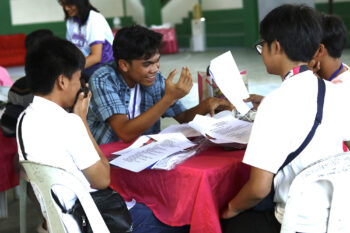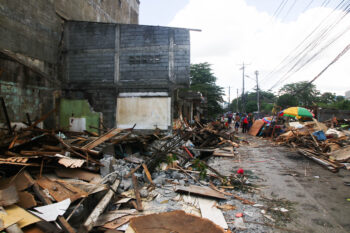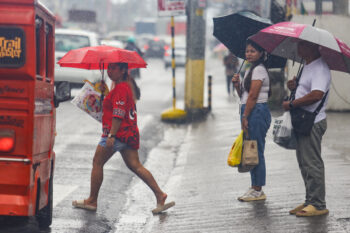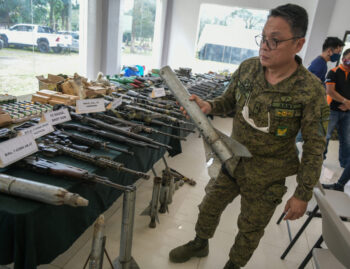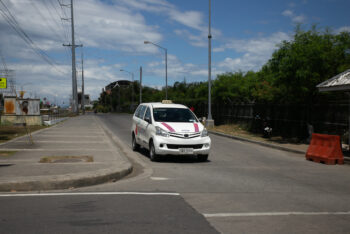DAVAO CITY (MindaNews/09 August) — The government is expecting stable power supply in Mindanao in 2015, coming mostly from coal power plants although efforts are underway to also fast-track renewable energy projects to balance the energy mix in the island in the long-term, officials said.
According to the “Mindanao Power Situation and MPMC (Mindanao Power Monitoring Committee) Updates June 2013” of the Mindanao Development Authority (MinDA), between now and 2020 – or within seven years — the power generation mix in Mindanao is expected to change drastically from the present 52% hydro and 31% coal, to 40% -hydro, 28% coal in 2016 and by 2019-2020, 56% coal and only 24 % hydro.
Romeo Montenegro, Mindanao Development Authority (MinDA) director for investment promotion and public affairs, said coal power plants would be the immediate fix to solve the recurring power problem in the island.
“By 2015 to 2016, we expect relief from brownouts as coal plants now under construction will address the base load capacity of Mindanao,” he told MindaNews.
Montenegro cited the coal power projects of Therma South Inc. in the boundary of Davao City and Sta. Cruz, Davao del Sur and that of Sarangani Energy Corp. in Maasim, Sarangani.
Therma South is constructing a 300-megawatt (MW) coal power plant, with the first phase of 150 MW targeted to go on stream in the third quarter of 2014. On the other hand, Sarangani Energy is building a 200 MW power plant, with the first phase of 100 MW expected to run in early 2015.
Coal plants are widely opposed by multisectoral groups due to concerns over the environment and human health.
Between late 2014 and 2016, 500 MW are expected to come from coal-fired plants, while another 80 MW will be coming from diesel and geothermal power plants, MinDA data showed.
As of 2013, hydro power plants run by the government supply 52% of Mindanao’s power requirement, followed by oil-based at 31 %, coal at 10 %, geothermal at 5 % and biomass at one percent, it added.
By 2016, the power scenario in Mindanao, including the committed projects, is expected to be 40 % hydro, 28 % coal, 25 % oil-based, six per cent geothermal and one per cent biomass, MinDA data said.
But by 2019-2020, the energy mix in Mindanao, including committed and indicative power projects, would be 56 % coal, 24 % hydro, 14 % oil-based, four per cent geothermal and one per cent each for biomass and solar, according to the same data.
Montenegro said the government is also pushing for the development of renewable energy projects to balance the energy mix in Mindanao in the long-term.
To encourage investments in renewable energy projects, a one-stop shop will be established in the island to facilitate and fast-track the application process, said Bryan Diosma, technical staff of the Mindanao Power Monitoring Committee (MPMC).
The MPMC, where MinDA serves as the secretariat, was created by Executive Order (EO) 81 signed on July 30, 2012, to spearhead and coordinate the efforts of the national, regional and local governments and power industry stakeholders to improve the power situation in Mindanao.
Diosma said that it usually takes 612 days to process renewable energy application but with the one-stop shop, “we expect to shorten the process by half,” he told MindaNews.
Diosma said they are preparing the draft EO for the establishment of the one-stop shop that will be subjected for review by other concerned government agencies.
“If everything goes smoothly, in three months’ time the one-stop shop could start operation,” he said.
Diosma said that the Department of Energy (DOE) has approved hydropower projects in Mindanao that could produce 364 MW, but construction has yet to start.
Pending applications for hydropower projects have the potential to generate another 363 MW, he added.
Aside from MinDa and the DOE, the other government agencies that will be involved in the proposed one-stop shop for renewable energy projects are the Department of Environment and Natural Resources and its bureaus, Department of Agriculture, Department of Agrarian Reform, Department of Public Works and Highways, National Commission for Indigenous People, National Water Resources Board, Housing and Land Use Regulatory Board, and local government units.
Supply shortage anew
Brownouts were expected to be back in parts of Mindanao this month until the end of the year with the scheduled preventive maintenance of power plants operating in the island.
The 200-MW Steag State Power Corp. shut down its Unit 1 (100 MW) last July 27 until August 14, Agus 4 from August 15 to October 19 (250 MW), and Steag’s Unit 2 from September 21 to October 27 (100 MW), according to MinDA data.
But Diosma said the deficit will not be as worse as the situation early this year, citing the start of operation of the Interim Mindanao Electricity Market (IMEM) in September and the Interruptible Load Program of the DOE. (Bong Sarmiento / MindaNews . This article was first published in OUR Mindanao newsmagazine issue of August 8, 2013)
The IMEM “is a venue for the transparent and efficient utilization of all available capacities in the Mindanao grid to meet the supply deficiency” while ILP provides incentives for large companies with their own power generation capacity to sell their excess power to the grid.
[This piece was first published in the August 8, 2013 issue of OUR Mindanao newsmagazine[

